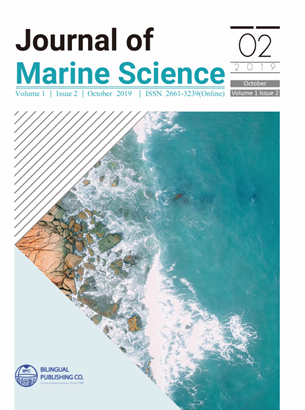Managing Tidal Inlets
DOI:
https://doi.org/10.30564/jms.v1i2.850Abstract
Sandy inlets are in a dynamic equilibrium between wave-driven littoral drift acting to close them, and tidal flows keeping them open. Their beds are in a continual state of suspension and deposition, so their bathymetry and even location are always in flux. Even so, a nearly linear relationship between an inlet’s cross-sectional flow area and the inshore tidal prism is maintained - except when major wind and/or runoff events act to close or widen an inlet. Inlet location can be stabilized by jetties, but dredging may still be necessary to maintain a navigable channel. Armoring with rock large enough to resist erosion can protect an inlet bed or river mouth from excessive storm flow erosion. Armoring can also be used as a stratagem to close inlets.
Keywords:
Inlet; Littoral drift; Shields parameter; Tidal prism; Cobble armoring; CoastalReferences
[1] Shore Protection Manual, U.S. Army Corps of Engineers, 1984, 1: 1-14 to 1-15.
[2] O’Brien, M.P., “Estuary tidal prisms related to entrance areas,” Civil Engineering, 1931,1(8): 738-39.
[3] Bruun, P., and F. Gerritsen, “Stability of Coastal Inlets,” J.Waterways and Harbors Division, ASCE, 1958, 84(3): 1644.
[4] Wiegel, R.A., Oceanographical Engineering [M], Prentice-Hall, 1963: 380.
[5] Shields, A., “Anwendung der Ähnlichkeitsmechanik und der Turbulenzforschungs auf die Geschiebebewegung,” Mitteilung der Preuss. Versuchsanst. für Vasserbau und Schiffbau., Berlin, Heft 26, 1936.
[6] Rouse, H.W. (ed.), Engineering Hydraulics [M], Wiley, 1950: 790.
[7] Shore Protection Manual, U.S. Army Corps of Engineers, 1984, 2: 6-53 to 6-76.
[8] Spaulding, M., personal communication, 1982.
[9] French, J.A, and B.M. Harley, “Tidal Dam Closure in Singapore,” presented to the Hydraulics Group, Boston Society of Civil Engineers, 1985.
Downloads
Issue
Article Type
License
Copyright and Licensing
The authors shall retain the copyright of their work but allow the Publisher to publish, copy, distribute, and convey the work.
Journal of Marine Science publishes accepted manuscripts under Creative Commons Attribution-NonCommercial 4.0 International License (CC BY-NC 4.0). Authors who submit their papers for publication by Journal of Marine Science agree to have the CC BY-NC 4.0 license applied to their work, and that anyone is allowed to reuse the article or part of it free of charge for non-commercial use. As long as you follow the license terms and original source is properly cited, anyone may copy, redistribute the material in any medium or format, remix, transform, and build upon the material.
License Policy for Reuse of Third-Party Materials
If a manuscript submitted to the journal contains the materials which are held in copyright by a third-party, authors are responsible for obtaining permissions from the copyright holder to reuse or republish any previously published figures, illustrations, charts, tables, photographs, and text excerpts, etc. When submitting a manuscript, official written proof of permission must be provided and clearly stated in the cover letter.
The editorial office of the journal has the right to reject/retract articles that reuse third-party materials without permission.
Journal Policies on Data Sharing
We encourage authors to share articles published in our journal to other data platforms, but only if it is noted that it has been published in this journal.




 Jonathan Akin French
Jonathan Akin French

